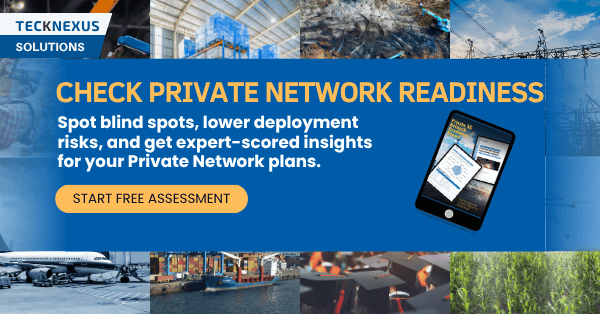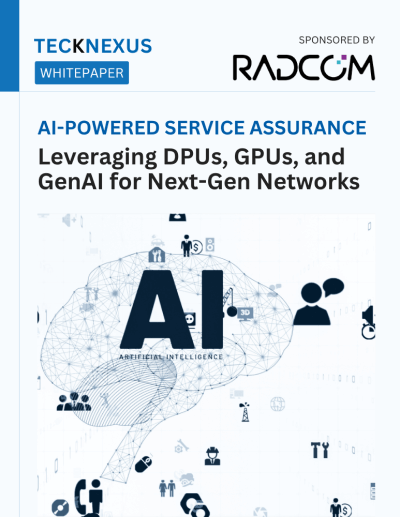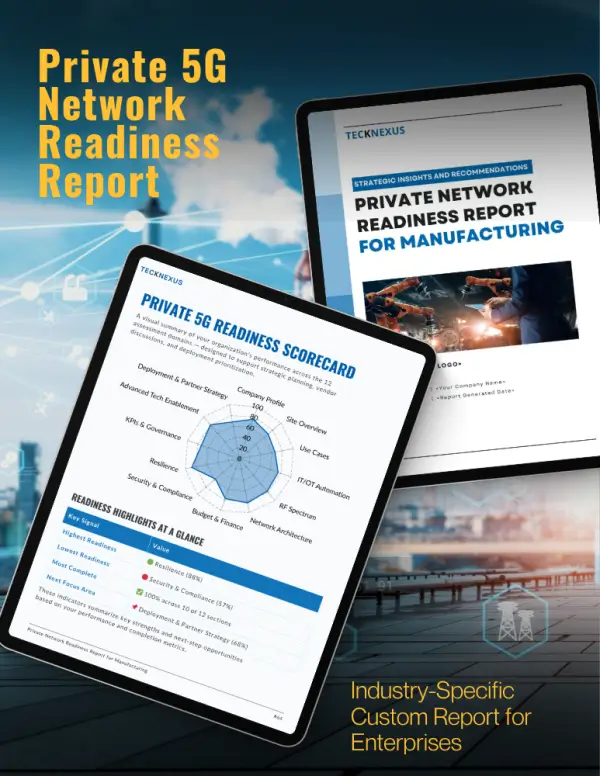The Growth of Private Networks: Trends and Opportunities
The private network market has been closely observed for several years and appears poised for a significant expansion, with more networks emerging over time. There is noticeable growth: many customers who already use the OneLayer solution first deployed it a year or two ago in a single factory site after a successful proof of concept (POC).
These deployments are scaling up. Organizations that saw cost savings and tangible benefits from their initial POC are expanding to other sites. Customers with private LTE in one location are now rolling it out in multiple locations.
Certain markets and verticals, such as utilities, show strong momentum. There are success stories, and more are following suit. Someone in the utilities space once pointed out that, in this market, nobody wants to be first, but everyone wants to be second. With private LTE networks proving they can support various use cases, more utilities are exploring adoption. At industry conferences, many utility companies are in the exploration phase, discovering how private networks can help them. Overall, it looks promising: more organizations are adopting or expanding private networks.
OneLayer’s Role in Scaling Private Network Security
OneLayer’s role shifts based on the maturity of a prospect’s network. When a network is small—evaluating use cases and trying to understand potential benefits—OneLayer serves as an inventory management tool. It provides visibility into which devices are connected, tracks changes in identity or location, and monitors device swaps.
Other concerns arise for larger customers with 1,000 devices or more. One key question is how to automate the provisioning and activation of large numbers of SIMs, including how to associate SIMs with the correct profiles. Another is ensuring that network alerts also feed into existing IT or OT alerting systems. Integrating device data into existing databases is equally critical. These issues revolve around syncing massive amounts of data and ensuring smooth operations at scale.
Success Stories: OneLayer in Action Across Industries
A notable success story involves Evergy, a U.S.-based utility company. Evergy needed to provision and activate hundreds of SIMs at once and keep track of each SIM’s profile, including the device it was inserted into—a Sierra Wireless or a 4RF device. The process also required knowing and managing the devices’ locations over time.
Provisioning posed the biggest challenge. Using an Ericsson core, Evergy manually provisioned each new batch of devices, which was time-consuming and error-prone. It also diverted RF engineers from more pressing tasks.
OneLayer automated the entire provisioning process so that Evergy’s team could upload a file and have all SIMs provisioned automatically, ready for field deployment. This significantly shortened the onboarding timeline, from receiving the SIMs to getting them into operation.
Another successful deployment took place in the manufacturing sector. OneLayer extended segmentation groups to a firewall, monitoring the tags that classified devices at different security levels. For example, level two devices could not communicate with level three or four devices. OneLayer tracked all network identifiers for each device and forwarded them to the firewall, ensuring the firewall’s enforcement remained accurate even if IP addresses or SIMs changed.
Building Bridges: OneLayer’s Strategic Partnerships in Private Networks
Strong partnerships with core vendors are essential for OneLayer’s solution because direct communication with core systems is critical. An Ericsson-based network requires collecting information from the Ericsson core; a Nokia-based network requires collecting data from the Nokia core. The partnership is both technical and related to go-to-market efforts.
A priority for 2024 and 2025 is to extend these partnerships beyond integration. Ericsson now promotes the OneLayer solution to customers who struggle with device identification. Through its Mixi program, Nokia enables customers to download and activate OneLayer with a simple click, improving integration with Nokia’s NDAC core. Similar partnerships are sought with all core vendors to showcase OneLayer’s solution across multiple verticals.
Shaping the Future of Private Networks: Trends & OneLayer’s Approach
OneLayer’s main contribution to emerging trends is to ensure a seamless fit between existing IT and OT ecosystems and new cellular networks. Many enterprises already have systems for asset management, rule enforcement, or authentication, and these must mesh smoothly with cellular technology.
Acting as a “broker,” OneLayer’s software gathers real-time information from the cellular core and integrates it with standard IT and OT systems. For instance, SIM provisioning could begin in a ticketing system, and any related alerts might feed into a platform like Splunk. Achieving more efficient connectivity between cellular and existing systems is a key trend, and OneLayer aims to address it by streamlining integration
Key Takeaways for Private LTE Network Growth
Private LTE networks are at an exciting stage. Partnerships—whether with system integrators, advisors, or fellow technology vendors—are critical to success, especially in an emerging space where innovation and change happen quickly.
At OneLayer, frequent product updates are driven not by uncertainty about the company’s vision, but by a desire to offer solutions for a wide array of evolving needs. Adapting to constant change would be nearly impossible without collaboration and mutual learning among partners. Sustaining an engaged, collaborative ecosystem is vital so private LTE networks can continue expanding and delivering value.























